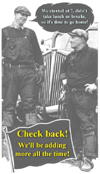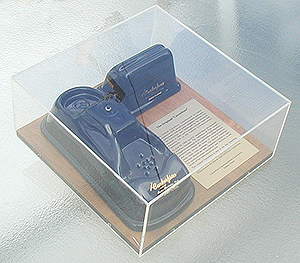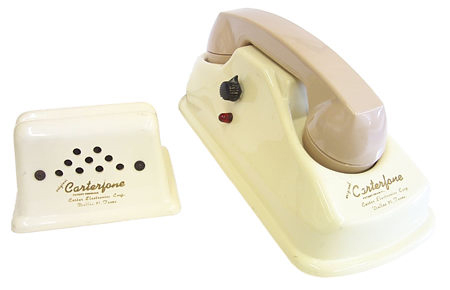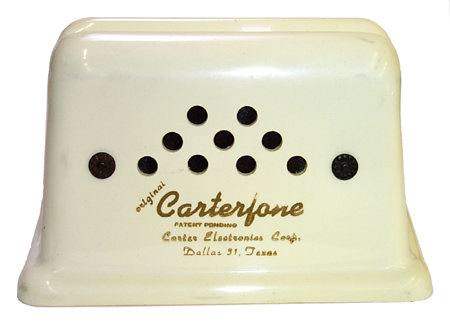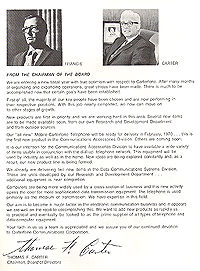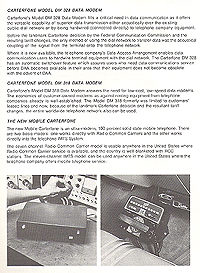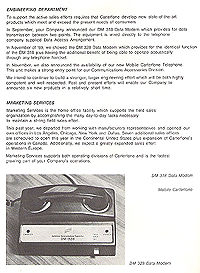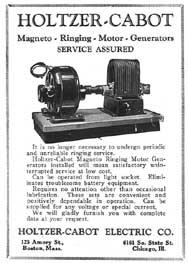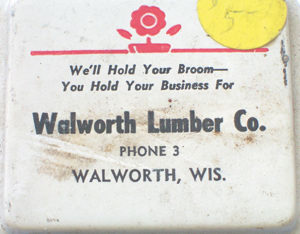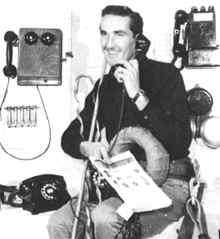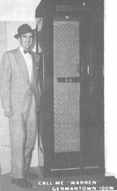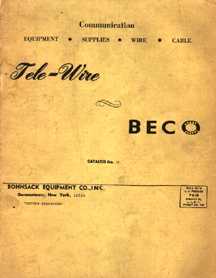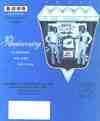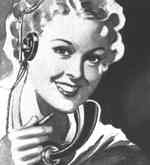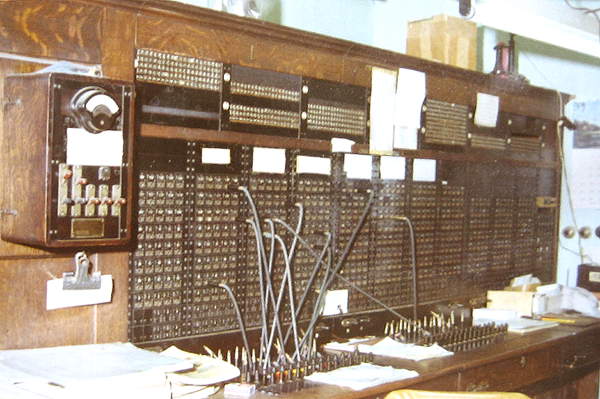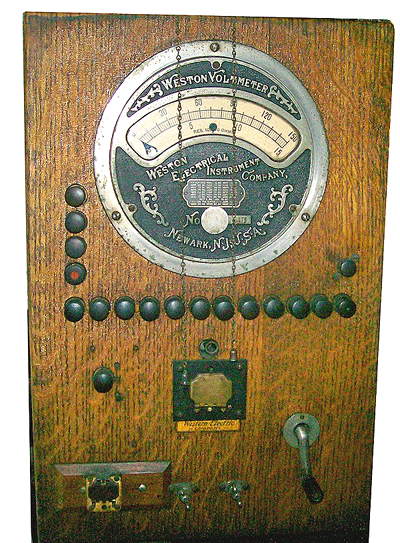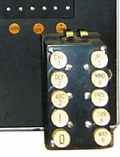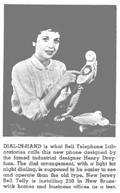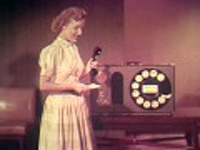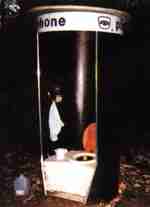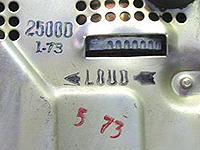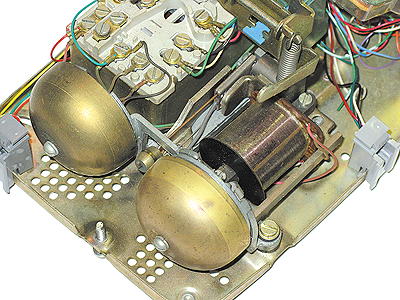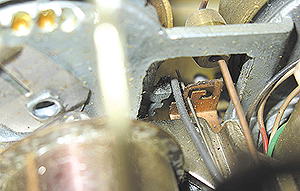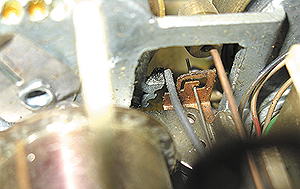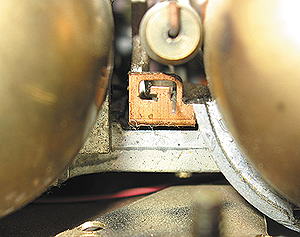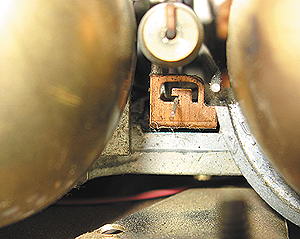The Telephone History Page
TELEPHONE HISTORY PAGES
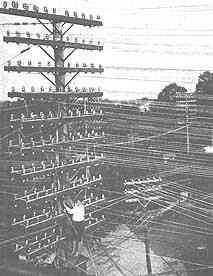 |
 |
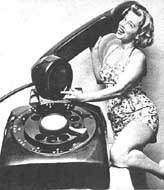 |
| This boy is standing on a pole with many "Open Wire" phone lines (not too smart). Poles would feed out in all directions from a town's Central Office. | ||
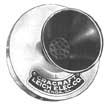 |
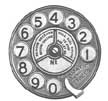 |
Our site has lots of ads and pictures... Most from old telephone trade magazines. We also have some technical information for you, and some neat items for sale!
You can click on most of the pictures on this page to see a larger version. If you have pictures that you'd like to see on our site, e-mail us at sales@sandman.com, and we'll try to get them on and credit them to you.
IMPORTANT NOTE: If the text is too small to read easily, you can make it bigger (or smaller) by holding down the CONTROL key, and rolling the wheel on your mouse (while holding CONTROL down). Release the CONTROL key to scroll up and down the page. This works on any web page with text (not graphics).
If you don't have a wheel on your mouse, you can click on VIEW in the menu at the top of your browser, then TEXT SIZE, and then LARGEST/SMALLEST (or INCREASE/DECREASE in Firefox).
OLD PHONE ACCESSORIES
This is my favorite section, since it shows how ingenious some of the pioneers of the phone business were!
The Beginning of the end of the Bell System... The Hush-A-Phone was a simple product that slipped over a Candlestick Phone or Telephone Handset and gave the user some privacy (the first noise canceling microphone!). There were no electrical connections, it just slipped onto the phone. It had been advertised and sold in trade magazines for years. An AT&T lawyer just happened to see one in a shop window on his way to lunch one day, and decided that it was his job to stop the sale of this device since it was being attached to the Phone Company's property. AT&T had previously won many court cases against companies who sold advertising trinkets (premiums) that slipped over or otherwise attached to their phones. These trinkets had phone numbers for the local coal company, funeral parlor and general store, but you couldn't attach those numbers to your phone since the phone wasn't yours.
The Hush-A-Phone Decision was a big win over AT&T in the US Court of Appeals, in 1956. It allowed the Hush-A-Phone (and every other similar device) to be stuck to AT&T's phones.
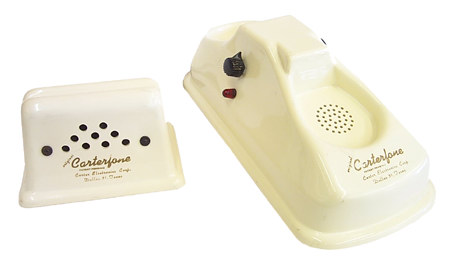
The Original CarterFone
More than a decade
after the Hush-A-Phone Decision,
Tom Carter won a decision against AT&T
that allowed anybody to connect anything to AT&T's telephone network,
if they used an AT&T
"Protective Coupler." That was the
Carterfone Decision, in 1968.
Tom Carter fought the battle with AT&T which led to today's total deregulation (well, just about) of telephone equipment in the US. As a matter of fact, the PTTs in just about every country in the world (a PTT is the FCC of other countries) followed the US lead of deregulating their telephone network after seeing the benefits US citizens saw when they were able to connect whatever they needed to the telephone network, both voice and data. Without that deregulation, it's possible the Internet would have stayed a network used by the government and large corporations, since the Phone Company would have surely made the price of data service, even slow modems, beyond the reach of most of us.
I mentioned to Helen Carter (Mrs. Tom Carter) that I didn't know how they stood up to AT&T, a company who specialized in crushing other companies. She replied:
"A few years before Tom's death in 1991, Harry Newton called me and said "Quick Helen....what would you put on Tom's tombstone"...so I responded quickly with "Here lies a stubborn Texan". That's the secret of how he did what he did."
Helen Carter also said:
"Tom's earliest prediction (about 1970) was that someday "voice and data will merge". So many people just laughed at that."
After the Carterfone Decision, up until the FCC started allowing connection of FCC registered equipment in 1976 (that you could buy in a local store), subscribers had to rent a protective coupler from the phone company (maybe $10 a month per line), which supposedly protected the public telephone network from any harm caused by the customer's phone equipment (CPE).
From my own experience, these protective couplers were very unreliable. They often left phone lines dead because they were defective, or the card cage they went into was defective (the cards and card slots had dissimilar metals, which caused oxidation and intermittent operation). The Phone Company didn't care, and didn't try to fix them very hard. They figured eventually the subscriber would get tired of dealing with the problems and go back to renting from them. I guess they were wrong.
I have to say that as an Interconnect phone man I made a lot of money going around checking dead line complaints. Probably 95% of the dead line service calls on phone systems are not the phone equipment, but a problem with the phone line coming into the building. It was that way before the Carterfone Decision, and it's that way today.
The CarterFone itself was a device that patched phone calls into 2-Way Radio equipment. It didn't actually wire into a phone or the telephone network. It had an acoustic coupler for a standard handset.
If you have an ad for a CarterFone let me know and I'll put it on our page and attribute it to you.
--------------------------------------------------------------------------------------------------------
Here's a picture of an original CarterFone (click on it to see a bigger version):
Jon Giberson's original CarterFone that
sits on the credenza in his office.
Jon is from Connections, a company specializing
in call accounting.
The plaque under the glass says:
The Original "Carterfone"
This original Carterfone, manufactured by Carter Electronics in 1959, served a need for mobile radio users to interconnect with the public telephone network. Use of the Carterfone was challenged by the telephone companies in 1966, and a lengthy struggle began that ultimately let to the Federal Communications Commission.
On June 26, 1968, the FCC handed down the landmark Carterfone Decision. The resolution of Tom Carter's struggle for acceptance of the concept of Interconnection permitted the creation of a multi-billion dollar industry that today serves all areas of communications needs data, voice, message. The historic Carterfone Decision allowed an open, competitive market to exist for communications equipment and facilities to the benefit of the communications user.
This original Carterfone is one of the few remaining devices in existence, and has been preserved to commemorate the historic legal milestone it represents.
Carterfone Communications Corporation
Dallas, Texas
--------------------------------------------------------------------------------------
Here are some more pictures of an original CarterFone (click to see a bigger version):
--------------------------------------------------------------------------------------
Rudolph Wratten wrote in and said he has a different model CarterFone. He says his is an acoustic coupler with a twist, a bar that both opens the line and dials the number. A standard 500 set is placed in a tray, and a bar goes over the switchhook cradle. The mobile user had a telephone dial that pulsed a tone, this pulsed the bar and thus dialed the number. The radios were half-duplex, this is to say, you could talk or listen, one or the other. In San Antonio, the CarterFones were marketed by a General Electric radio dealer, Industrial Radio.
--------------------------------------------------------------------------------------
Here are some scans James Francis sent of the CarterFone 1969 Second Annual Report (click to see a bigger version):
The middle page includes a picture of an IMTS type phone sitting on the "hump" by the front seat of a Cadillac... in 1969. The IMTS phone was similar to the first mobile phone, which was the MTS (Mobile Telephone Service), offered by Phone Companies. IMTS was the "Improved Mobile Telephone Service." There were also Radio Common Carriers (private companies) who offered the same type of service through their own radio channels (granted to them by the FCC). Actually, I think the phone on the hump is an RCC version of the IMTS, because I don't see the Bell logo on the front. RCCs usually also offered pager (beeper) service, before the Phone Companies got into it..
In the '60s through the '70's an acoustic coupler was often used for data (usually 110 baud, per Ed Cummings), by placing a regular telephone's handset into rubber cups (the acoustic coupler). Beeps from the other end of the line would be changed into serial data going into some kind of computer. Serial data from the local computer was changed into beeps and transmitted to the other end of the line. Since the data was just audio (beeps, kind of like Morse Code), there were no extra exorbitant charges for data use from the Phone Company, and there was no equipment to rent since there was no wired connection to the phone line (thanks to Tom Carter, and the Carterfone decision).
A Data Modem CarterFone is a logical extension of the original CarterFone, which used the acoustic coupler to patch voice from a phone call into a two-way radio (and vice-versa).
A drawback to the MTS and IMTS systems was that they used only 12 or 24 radio channels for a whole metropolitan area. That's 12 or 24 conversations at a time. Talk about frustration... and expense. The phones were thousands of dollars, it had a steep monthly charge, a very high per minute charge (could be over $1.00 a minute - notice the key lock on the face of the IMTS phone!), and even then you might have waited an hour or more for a free channel to make a call!
Modern cellular systems still use a limited number of radio channels. Rather than a single channel covering a whole metropolitan area, the channel might only serve a few block area, allowing 24 conversations at a time within a few blocks - not a whole big city! The 24 channels are then reused on the next few block area, and so on (that's where the term "cellular" came from).
The first pager service I saw was in the late 60's, from Roger's Radio (an RCC) in Chicago. Very popular with doctors. It was a tiny radio receiver with a really tiny speaker. When you wanted to page someone, you'd call the RCC (Roger's) operator, who would add that pager number to the queue of other people being paged.
There were no beeps with this baby. The operator simply read the list of pager numbers into a recorder every fifteen minutes or so. The recorder was an endless loop that would keep repeating the operator's recording. The recorder simply played the audio back into the radio transmitter, which covered a good part of the Chicago area (from an antenna on a tall building downtown). To see if you were being paged, you'd remove the pager from your belt, and push and hold a small button on the pager while holding the tiny speaker to your ear. You'd listen through the recording to see if your number was there. If it wasn't, you could stay at the bar a little longer?
Not long after that, the Motorola Pageboy Pager took the country (and doctors) by storm by always automatically listening for specific tones being broadcast on the radio channel, and literally "beeping" to alert the user when those tones were heard.
--------------------------------------------------------------------------------------
This is an old 8 minute AT&T video from 1979 that talks about the drawbacks of the old IMTS
mobile phone service, and the benefits of the "new" Cellular mobile phone service:
--------------------------------------------------------------------------------------
Here are some neat ads...
- Arm for Phone
- Scissors Bracket for Phone
- Hands Free Bracket? I can't believe this thing!
- The First Office Headset?
- Moisture Proof Cord
- NEW Colored Handset Cords
- Lightning Protector (neat graphic)
- Phone Meter... like an Electric Meter!
- Replacement Desk Stands
OLD EQUIPMENT
WANT OLD PHONES?
Advertisement
Need to buy an old phone?
Need to sell an old phone or collection?
Need an old phone repaired or refurbished?
Need parts for your old phone?
Need to convert an old phone to work today?
There's only one company in the US with the
experience, parts
and honesty to help you with your antique and reproduction phone needs...
PHONECO inc.
608-582-4124
Call to get your copy of their unbelievable full color catalog!
With over 30 years of experience, they can help you! Whether it's original or reproduction parts, a repair, a single old phone, a novelty phone, or even a set of crank phones to make your own intercom between your house and garage, they're the ones to call.
Located in Galesville, Wisconsin, PHONECO is a family business located in a four story building packed with phones and parts, providing full refurbishing and FCC authorized repair facilities. They've also got many trailers stuffed with old telephones and equipment. Their downtown Galesville building is a piece of history itself, with the basement level being an old livery where carriages would drive into the building.
Ron and Mary Knappen, the owners, are internationally known antique telephone experts. They've actually "written the books" on antique phone collecting, pay phone collecting, and phone company histories... including huge multi-volume sets that are the core of the knowledge of today's antique phone collectors.
WHEN WERE 2, 3, 4 or 5 DIGIT PHONE NUMBERS USED?
|
|
|
|
|
When was it made? You've found a great antique, and it has an old phone number on it. You figure that if you can find out when 3 digit phone numbers were used, you'll know when the antique was made... Right? NO! |
| Every Phone Company, different cities at the same Phone Company, and even different exchanges in the same city from the same Phone Company converted their Central Office (CO) equipment at different times. They may have gone right from 2 digit numbers to 7 digit numbers, or they may have gone from 2 to 3, to 5, to 7 digit numbers over 50+ years. The only way to know is to find someone still alive in that specific city who has a really good memory, find some other documentation where you might be able to figure it out, or ask the Phone Company's historian. The historian used to be the best option, except that most of the Phone Companies have closed their museums and fired their historians. The guys who run phone companies today (we're almost back to a monopoly) really don't care about the history of the phone business. Before they worked for the phone company they may have run a bakery or steel mill. They don't care about the phone business any more than they care about who picks up the garbage for the company. Sorry, but it's going to be very difficult to find out when a particular city went to a particular type of dialing... without a time machine. NOTE: Irwin Schuster from Tampa says that if you know the city and state that the phone number was located, and you have access to local newspaper files (and lots of spare time), the ads should tell you what year that item was made within a very small range. |
--------------------------------------------------------------------------------------
This is a neat old 17 minute AT&T Video from 1961 when the Phone Company went from Letters and Numbers to
All Number Calling (which took quite a few years to make it through all the Phone Companies in the country):
OLD BUTT-SETS
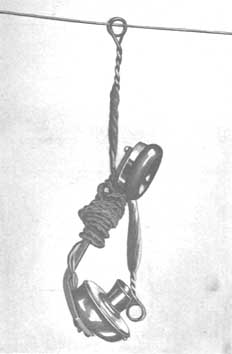
- 81A Test Set (Buzzer)
- Electronic Toner
- Inductive Probe (Banana Probe)
- Very Early WE (Non-dial) Butt-set, with later Belt Worn Dial (This handset was originally made for Army Field Phones)
- First Craft Access Terminal (MONSTER with Screen and 300 baud Modem!)
- First Craft Access Terminal - Back (needed to be charged every day!)
A Handy Test Set Snap By LYNN W. SHIPMAN May 2,1908
A very convenient device for attaching a lineman's test set to wires can be made from a piece of No. 10 copper wire. The form of the device is very clearly shown in the accompanying illustration.
Each snap is made from a piece of wire 12 in. long, which has been twisted twice around a 5/8-in. bolt, after which the ends are twisted together and the bolt slipped out of the ring. After forming the clip in this fashion, the twisted ends can be soldered to electric light drop cord, the joint taped and the attachment made to a magneto test set of the type ordinarily used for testing line trouble.
In addition to its durability, the writer has found that this type of clip is in some respects a great deal more convenient to rise than the "suspender clip" frequently furnished with the test sets for making attachment to wires. A small snap with saw-tooth jaws frequently catches when the lineman is climbing between the wires, or when being removed from the line, and causes annoyance. It will be readily seen that the home-made clip will not catch on anything, and it is very much more easily put on and removed. The strength of the attachment is shown in the rough test indicated under the conditions prevailing when the accompanying photograph was taken. A test set weighing 22 1/2 oz. is suspended directly from the clip and easily sustained. This shows, in addition to the security of the connection, that a good electrical contact is obtained with the wires to be tested. However, one of the advantages in this clip is that a good pull will release it. The usefulness of this will be appreciated when it is considered that in most cases a lineman will fasten his clip to the wire to be tested and then retire to a convenient place on the pole to wait until he can finish the test with the wire chief. With this type of fastener, when the test is finished, it is unnecessary for him to go hack within reaching distance of the wires in order to detach the set, as a gentle pull on the drop cord will release the snaps.
The Kickmeter (Pointmeter) was the primary cable test set for I/R (Installation/Repair) Technicians for many years. At many Phone Companies, it's been replaced by an electronic tester, called the Sidekick.
Click here to see a 1941 manual for the Kickmeter. If you can't read it because it's too small in IE, click on the bottom of the graphic, and then click on the little gray and orange box which will make it bigger. To save it, right click and choose "Save Target As" to save it to your hard drive.
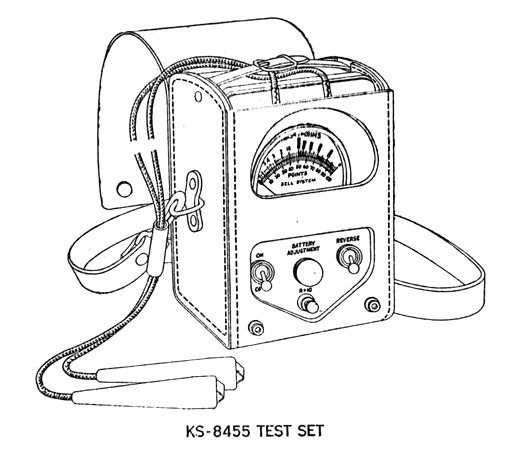
An experienced phone man can determine the distance to faults on a dry pair (with no battery) by simply flipping the reversing switch a few times, and reading how far the needle "kicks" on this rather simple (but rugged) volt-ohmmeter.
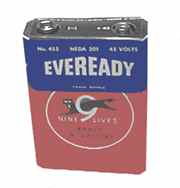 45V Battery
45V Battery
Dimensions: 2 5/8" x 3 1/2" x 15/16" thick.
This battery was used in a number of Western Electric testers, including the famous Kick Meter (Point Meter).
They are now discontinued...
CONVERSION KIT FOR 45V KICK METER BATTERY
Conversion Kit allows you to use regular 9V batteries in place of the old odd-shaped 45V battery.
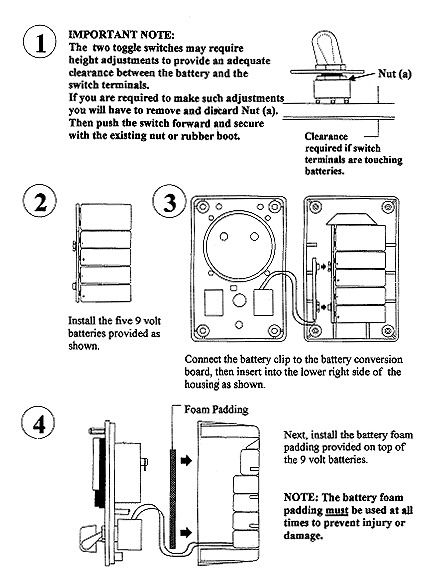 9V Kick Meter Battery Conversion Kit Instructions
9V Kick Meter Battery Conversion Kit Instructions
Fits right in the battery compartment of the Kick Meter.
Kit includes 9V batteries and snaps to connect to the battery connector in the Kick Meter.
TELEPHONE SERVICE IRON-ON 3 inch PATCH
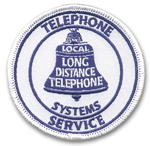
So maybe you want everybody to know you're the Phone Man?
Iron or Sew them onto your Shirt, Jacket, Hat, and even your Tool Bag!
The 3 inch size fits perfectly almost anywhere!
These are official looking patches!
They have the familiar bell (the copyright has expired), and the type style is the same as the original from many years ago. Really neat!
Limited Quantity!
Comes with sandman.com 30-Day Moneyback Guarantee
Part # TLS4ETELEPHONE SERV PATC
$1.89 Quantity Pricing AvailableOLD BECO CATALOGS
You can learn an awful lot about the telephone business from these two catalogs, from 1968 and 1977. I did!
Warren Bohnsack's father owned the Germantown Telephone Company in New York, where he learned the telephone business. After deciding he was a much better salesman than a phone man, he left the operating company where his mother and sister operated the magneto switchboard, and his brother handled the inside and outside plant. His family still runs the phone company today.
The wholesale prices in these catalogs are very entertaining! The first catalog (below) is full of refurbished phone equipment that is very useful as an aid to identifying old phone equipment. It even has old 1A1(wire spring) key telephone equipment, and conversions from old WE 302 and Stromberg-Carlson 1543 sets to "modern looking" 500 sets.
In the second catalog (their 30th Anniversary Edition) you'll see some very interesting pictures of young ladies along with lots of telephone equipment. The picture of "Ma Bell" is not what we think of today, with telephones strategically placed around her (cover and page 17). A great way to sell stuff to phone men, but it wouldn't work today (it's not politically correct). I've wanted to do it in our catalog for years, but Donna has threatened me with great bodily harm to important parts if I did.
Beco's best known product is their 1011 Rubber Butt-Set. They bought the rights to the Rubber Butt-set and the 81A Test Set (predecessor to the electronic toner) from Western Electric. They updated the Butt-set to use a standard size rotary dial, instead of the little one that required a pencil or small fingers to dial (but I loved that Butt-set!), put a better "Talk/Monitor" switch in the unit, and put in a modern T-1 transmitter and U-1 receiver. That Butt-set is the most rugged ever developed, and is still in use today around the world! They replaced the rotary dial with a touch tone pad in their tone model, still in the same round shape.
The first catalog shows the 1011 with a Western Electric dial, and a mouthpiece area that's exactly like the original WE set. The second catalog shows a redesigned model with a larger rubber mouthpiece, and an AE dial. It also shows the 81A Test Set (buzzer), which faded into obscurity as soon as electronic phone systems started appearing. The buzzer in the 81A is easily heard when tracing wires, but it was soon learned that the large spikes created by the buzzer destroyed electronic phone equipment. If you have an 81A Test Set, don't even think about using it!
The second catalog also shows the mid-70's line of Stromberg-Carlson phones. I particularly liked their 1800 sets that looked just like the WE Call Director, but was available in a six button version. I loved them because they made it easy for me to compete with Illinois Bell, who could only supply traditional looking 2564 six button desk sets. They were pretty reasonably priced, too.
NOTE: BECO is out of business. These are genuine antique catalogs from 30 or 40 years ago, so unless you have a time machine you aren't going to be able to buy this stuff for the prices listed!
If you really want something you see in one of these catalogs, your best bet is to call Mary at 608-582-4124. She might have it for sale, or know where you can get it.
OLD CORD and CORDLESS SWITCHBOARDS
|
Switchboards were originally located at telephone company Central Offices, and were used to connect subscribers together so they could talk. When businesses began installing multiple phones within their buildings, an on-site switchboard was used to connect a particular phone to an outside line. The switchboard also provided an intercom, where the operator would connect one phone to another in a different part of the building. These were the first PBXs (Private Branch Exchange). Some companies installed a separate PAX (Private Area Exchange), which was an automatic intercom between employees using various types of dials or push-buttons. Not all locations in a business would have both types of phones on the desk, since few employees would need to talk to people outside their company in those days. While a PAX could be purchased by a business, a PBX and the telephones connected to it would normally be rented (costing quite a bit over the years!). Later, PBXs allowed users to dial both between phones and onto the CO lines. When there were multiple positions that weren't covered by operators (like at night), an operator could use a plug from her switchboard in a jack of one on either side. The plugs, combined with their associated switches, were what actually rang and connected telephones (the jacks). An operator could connect a phone with another phone, or a trunk that went to another office (also a jack). Phone company operators often had to keep track of the charges for the calls she connected, using a timer device called a Calculagraph. |
Central
Office Switchboards
|
PBX & PAX Switchboards and Phones |
|
|
|
|
Click for a bigger photo of the really old |
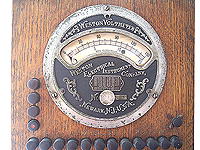
Click for a bigger photo of the
Western Electric Magneto Test Desk photo courtesy of Dave Cherry, Cincinnati, OH |
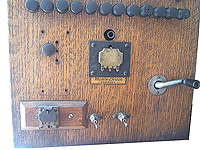
Click for a bigger photo of the Drops
(used |
|
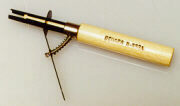 Switchboard and 51A Lamp Extractor
Switchboard and 51A Lamp Extractor
These types of lamps are usually recessed into a hole, and you just can't quite grab them with a long nose pliers (it slips off). This is the traditional answer, with the original wooden handle.
OLD PHONES
OLD AT&T VIDEOS
Click the picture for a bunch of neat old videos from the
AT&T Archive on YouTube (opens in a new tab):
OLD TOOLS and EQUIPMENT
In going through these ads, it's amazing to see how many of the companies in the telephone business were started in the Chicago area. Here are some neat old tools, blocks etc...
|
|
TELEPHONE COMPANIES
In the beginning... There was the Bell System, an organization of phone companies with the same owner. There were also the Independents, who were all of the other phone companies owned by anyone else (who teamed up to compete with the Bell System).
The rivalry included "long distance" lines between phone companies, which carried traffic between cities. In the beginning, you couldn't even call someone who was a subscriber in the competing system, since the lines didn't connect anywhere.
There was pretty fierce fighting between these groups for many years. Bell eventually won, buying up most of the Independents after beating them into submission.
The Bell System owned Western Electric, which manufactured or sourced most of the popular stuff used by the Bell System. There were many manufacturers competing for the Independent's business, as well as trying to sell to the Bell System. You'll see ads for a lot of those companies throughout this page.
The Telephone, a video that we sell (further down the page), does a great job of explaining the development of the telephone and the Bell System - and how they beat the Independents. It's well worth watching, and not very expensive.
Click on the interesting patch on the left! It was sold by an organization called TAP in the 1970's. It was made to look exactly like the patch then worn on the jackets of Bell System employees throughout the country (the jackets with the racing stripes). Members of TAP were really the first "hackers," primarily concentrating on making free phone calls through "The Phone Company." They were based in New York. Members of TAP 'invented' the various colored boxes which allowed free calls. Some of them also did jail time, since 'Ma Bell' wasn't too happy with them - and she had a lot of pull with the authorities!
Bell System Advertising Independent Advertising
OLD PAYPHONES
OLD MANHOLE COVERS
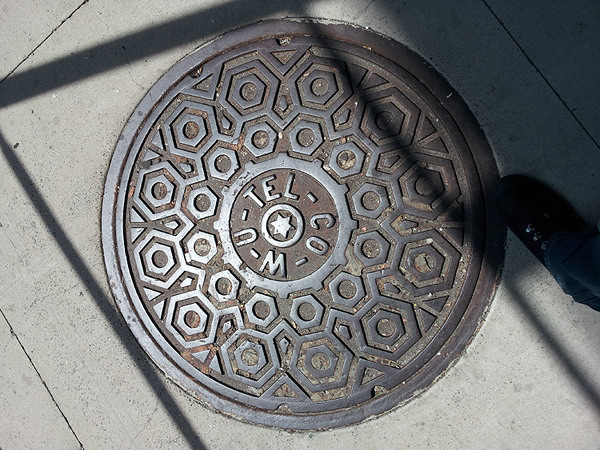 |
|
Photo by Stu Shulman Western Union Manhole Cover in Manhattan - New York City Located near Thomas & Hudson Street, Stu from S&S Interconnect took this picture in 2014, and says there were two of these along the sidewalk. He said it's not far from AT&T's old switching center at 32 Ave of Americas, and a couple of blocks from AT&T's current switching center on Thomas Street. |
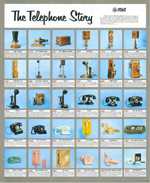 The Telephone Story
The Telephone StoryCollector's Item from 1969...
This is the first thing visitors walk up to in our office!
Actual Poster distributed by AT&T to consumers in 1969. AT&T ran ads in magazines, asking for readers to write them a free copy. Even the full page ad was pretty impressive!
This fantastic Poster features pictures of 30 phones, ranging from Bell's first in 1876 to the "new" Picturephone in 1969 (which was never actually put into full production).
Click on the Poster to see it in more detail. Thanks to David Massey of the Tribute to the Telephone web site for the great scan of the Poster!
Adjusting an old 500 or 2500 set to ring on lower voltages (like a VoIP device)
The old 500 and 2500 sets with double gong ringers, and 2554 sets (mini-wall phones) with single gong ringers, have a small bias spring to adjust the clapper on the bell. The bias spring was normally shipped in the high position so the bell wouldn't tap when a rotary phone was dialed or another phone went on and off-hook - which can put out a spike that's enough to move the clapper a little.
If you have less than the standard 90V AC ringing and would like to make an old style phone ring, you could try setting the bias spring to the low position to see if it rings.
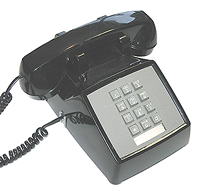 |
|
|
AT&T |
2500
Set Markings |
|
|
|
|
Double
Gong Ringer |
|
|
|
|
|
Bias Spring in Low Position |
Bias Spring in High Position |
|
|
|
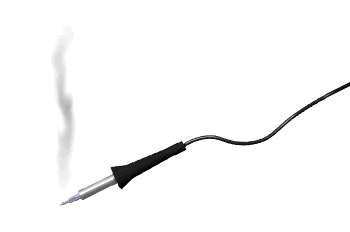
We
Specialize in Strange Telecom Stuff!
If you need a piece of telecom or electronic equipment manufactured, use our telecom expertise, our existing products, our plastic enclosures, and short run manufacturing experience to help you get your product made quickly.
It may take us as little as a day to engineer a way to solve a strange problem, and only a short time to put it into production... even in small quantities.
BOOK: Everything Happened Around the Switchboard
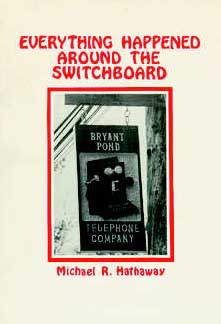 Everything Happened Around the Switchboard
Everything Happened Around the Switchboard
by Michael R. Hathaway
Pages: 190
Soft Cover
This is really fun reading! I sure wouldn't want to do what Eldon Hathaway and his family did for over 30 years to keep the Bryant Pond Telephone Co. operating.
Setting poles, running open wire in the dead of winter, fixing and replacing old crank phones, repairing and replacing finicky old switchboards, driving and repairing finicky old telephone trucks... Makes me glad I've worked as a phone man in the city!
We don't know how good we've got it, but you can sure find out in this great book!
BOOK: Just an Old Telephone Man
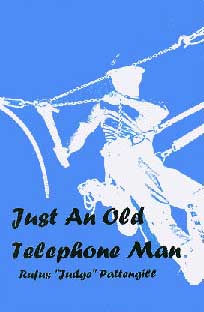 Just an Old Telephone Man
Just an Old Telephone Man
by Rufus "Judge" Pattengill
Pages: 100
Soft Cover
If you've been a phone man, this really hits home! Judge describes his career as a phone man, from his first days (including morning coffee), through his retirement.
He spent time as a Lineman, Installation/Repair, Tester, Engineer, and finally in management. He's got an incredible number of stories that would be interesting to anyone, but they're really funny and familiar to a phone man!
Well worth the read!
CD-ROM: HISTORY OF COMPUTERS
 by Mark Greenia
by Mark Greenia
A History of the People and Machines that made Computing History!
A great tool for students, teachers, researchers, and anyone interested in Computer History. Covers early mechanical calculating devices, early vacuum tube computers, Giant Brains, early mainframes and minicomputers, early microcomputers and more!
Covers the following topics and more:
Early calculating machines Early typewriters and office machines Early electronic calculators Microprocessor History Historical chronology of Robotics History of ARPA, ArpaNet, Internet Historical Firsts in Computing Evolution of Counting Methods Photos of early computers and pioneers Early Vacuum Tube Computers Portable Electronic Calculators Early Storage Technology Five Generations of Computers Early Time Sharing; Magnetic Media Early Programming Languages
Mark Greenia put a lot of work into compiling this CD, which includes LOTS of pictures of old computer stuff!
TIN SIGN: AT&T Long Distance
 AT&T Bell System Sign
AT&T Bell System SignReproduction: 8" by 8" Blue and White Porcelain Over Tin Sign
Very thick, well made sign. Signs like this hung outside many Phone Company offices around the country for years.

For many years, there was a Fierce Fight between the Independents and Bell. Bell eventually won, pretty much buying up most of the Independents. As you can see, they both talked about their Local and Long Distance service.
Click on the Independent Badge to see a bigger version. Sorry, we don't have any Independent signs for sale.
Need DIALTONE to use, and show off your great collection of dial phones?
 You can actually USE the phones in your collection!
You can actually USE the phones in your collection!
The PBXtra is a small, inexpensive PBX that will allow you to actually use those great looking phones! You can attach 8 Phones with their own extension numbers to the PBXtra, to call among themselves. Even more if you double up on extension numbers! Each port has around 2 REN (will ring 2 bells in standard 500 sets).
If you want to call out of your house, dedicate one or more ports to outside lines. Since all 8 ports on the PBXtra are universal, they can either be extension ports or outside lines. Lines are accessed by dialing 9. You can program incoming calls to ring at any extension you choose (or all extensions). If you have 2 outside lines, you'll have 6 extension ports to use for phones. If you have 1 outside line, you'll have 7 extension ports for phones.
The PBXtra can be set up to use rotary phones for both inside and outside dialing, so it's perfect for collectors!
NOTE: Do NOT use the PBXtra with telephones that have a crank, and/or internal batteries. Those types of phones will probably blow up the PBXtra, but can be wired together among themselves to form a little "system."
8 PORT PBX: PBXtra
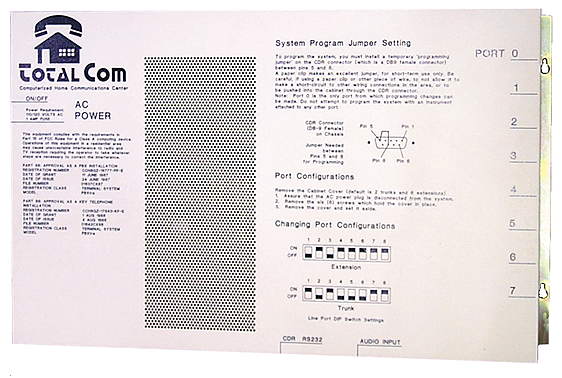 PBXtra Phone System
PBXtra Phone System
Uses Standard Analog (Single Line) Phones
8 Universal Ports (Each Port can be a Station or Trunk)
Comes Factory Configured for 6 Stations and 2 CO Lines (Loop Start Only)
Some Popular Uses:
- Line Sharing for Modems (Modem Speed is Limited to 28K)
- Telephone Line Simulator for Testing Telephones, Modems or Systems
- Telephone Line Simulator for Demonstrating Telephone Equipment at Trade Shows
- Use for Dial Tone in a shop repairing telephones, or phone systems.
- When used for line sharing, put a fax on one port and all incoming calls will go to the fax, while the fax will use the next available line for outgoing calls.
I DON'T Recommend using the PBXtra as a phone system in your house or business, since modern Key Systems that have a light and button for each line, and a hold button, are MUCH Easier to Use! Even so, there are still some crackpots using this type of phone system (or Centrex) with single line phones, and they just tell you to "Call back if I cut you off while transferring you." That's a pretty impressive way to do business!
Some Specs:
- 48VDC Talk battery - 90VAC 20 Cycle Ring Voltage (2 REN per station).
- 8 Non-Blocking Universal ports, defaults 2 by 6. DIP Switches select line or station. 8 Mod Jacks on side of cabinet.
- Programs from first station port (X100), using touch tone phone.
- Default Dial 9 for CO Line. Program other Trunk Groups as desired. Gives Busy Signal if all trunks busy.
- Incoming calls can be programmed to ring at any station.
- DISA feature answers an incoming call and allows caller to get dial tone, and dial an extension number (or trunk access code) when calling into the system. The caller must know what extension number to dial. There are no voice prompts. NOTE: Allowing DISA on a system with CO line access is dangerous, since anybody can call into your system and then dial out again.
- Dial out Tone or Rotary on CO Lines. Stations can use Tone or Rotary Phones. CO Lines must be programmed for Rotary, to allow rotary phones to dial outside the system.
- Programmable ACD (Automatic Call Distribution) Feature.
- Music on Hold Input.
- Maximum data speed of 28K from Stations.
- RS-232 port for SMDR (Station Message Detail Recording) shows all calls made and received (the PBXtra does NOT receive or pass Caller ID).
Comes with sandman.com 30-Day Moneyback Guarantee
Part # CID3S
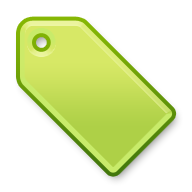 Products
Products